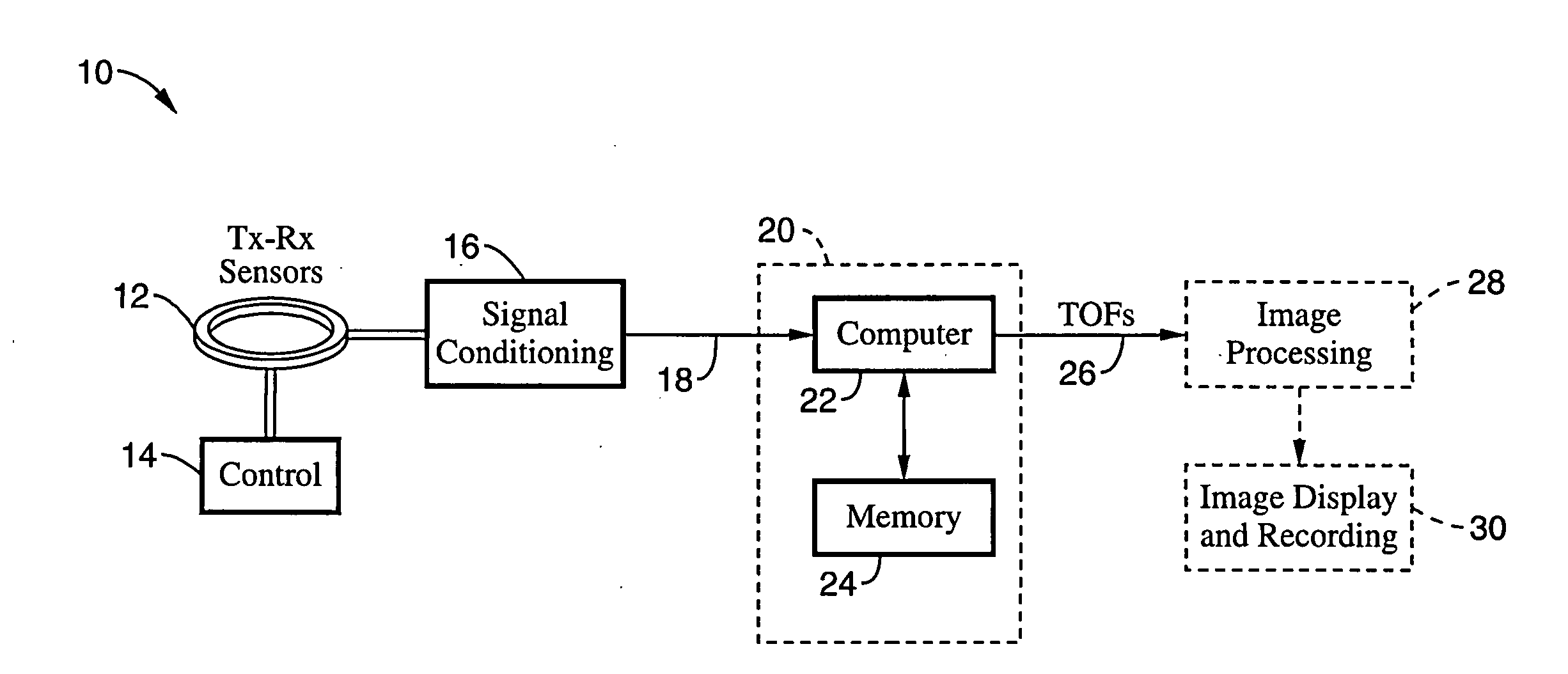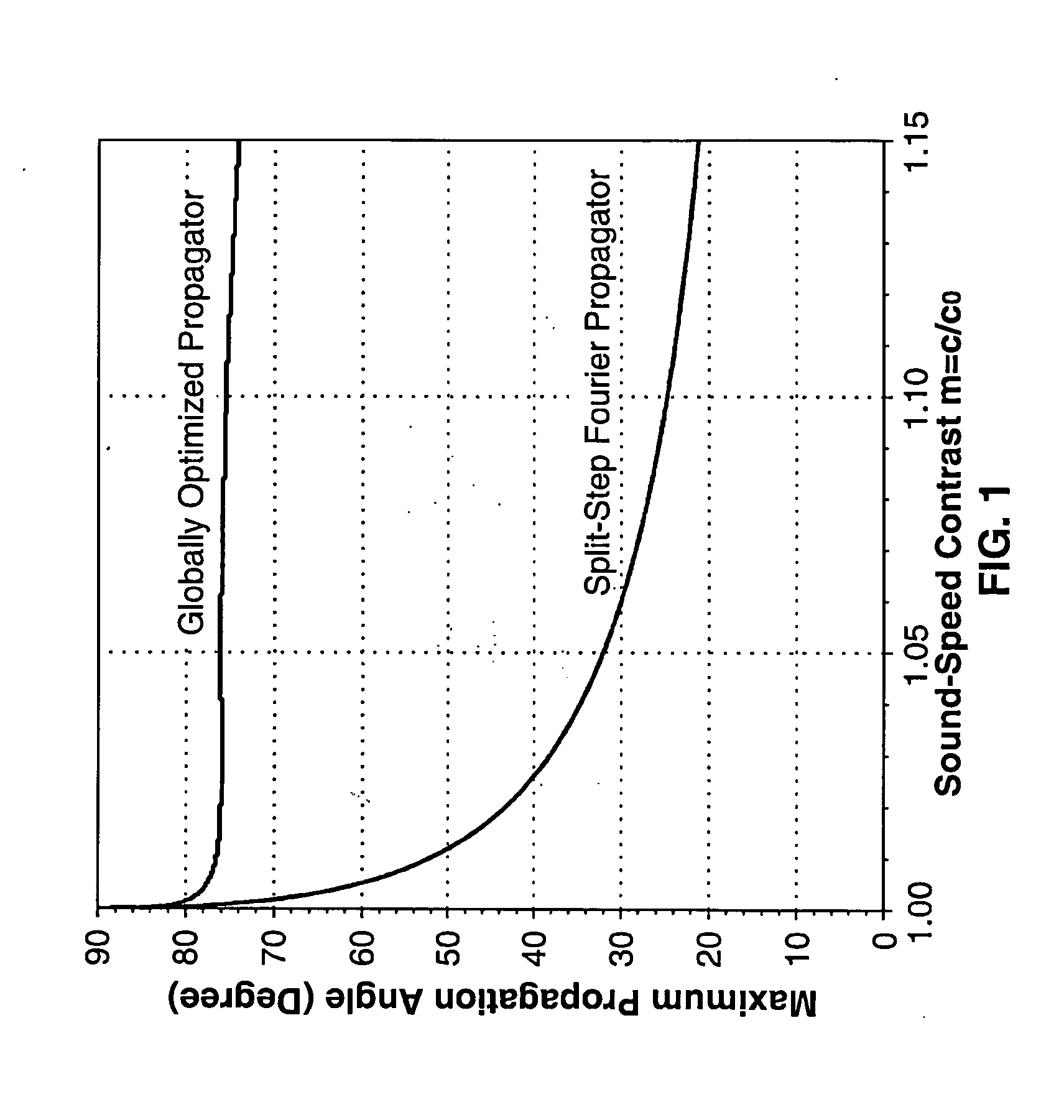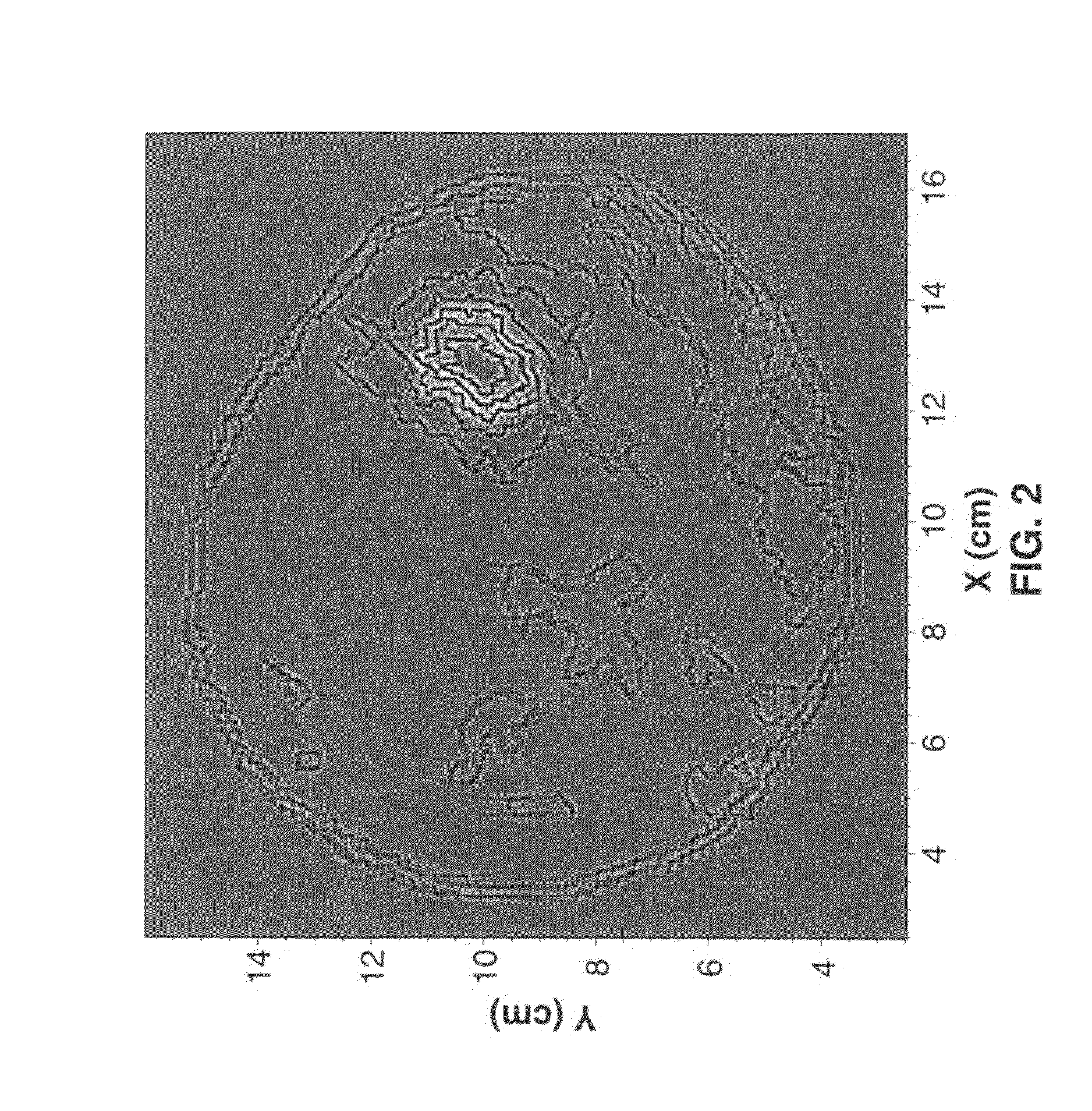High-resolution wave-theory-based ultrasound reflection imaging using the split-step fourier and globally optimized fourier finite-difference methods
a wave-theory-based, ultrasound reflection imaging technology, applied in the field of ultrasound imaging, can solve problems such as noisy and speckled ultrasound images, and achieve the effect of improving both image quality and resolution of ultrasound imaging
- Summary
- Abstract
- Description
- Claims
- Application Information
AI Technical Summary
Benefits of technology
Problems solved by technology
Method used
Image
Examples
Embodiment Construction
[0049]Referring more specifically to the drawings, for illustrative purposes the present invention is embodied in the apparatus generally shown in FIG. 1, and FIG. 3 through FIG. 21. It will be appreciated that the apparatus may vary as to configuration and as to details of the parts, and that the method may vary as to the specific steps and sequence, without departing from the basic concepts as disclosed herein.
Section A
[0050]1. Introduction.
[0051]To achieve high-resolution ultrasound reflection imaging it is essential to properly account for ultrasound scattering from heterogeneities within tissues being imaged, such as of the breast. A reflectivity image reconstruction method is needed which is capable of accurately handling ultrasound scattering. The teachings herein describe wave-theory-based methods for high-resolution reflectivity image reconstruction.
[0052]Ultrasound wave propagation in organic tissues, in particular breast or other human tissues, is governed by the acoustic...
PUM
 Login to View More
Login to View More Abstract
Description
Claims
Application Information
 Login to View More
Login to View More - R&D
- Intellectual Property
- Life Sciences
- Materials
- Tech Scout
- Unparalleled Data Quality
- Higher Quality Content
- 60% Fewer Hallucinations
Browse by: Latest US Patents, China's latest patents, Technical Efficacy Thesaurus, Application Domain, Technology Topic, Popular Technical Reports.
© 2025 PatSnap. All rights reserved.Legal|Privacy policy|Modern Slavery Act Transparency Statement|Sitemap|About US| Contact US: help@patsnap.com



